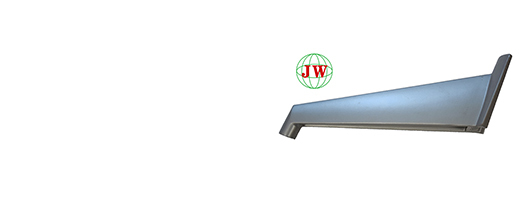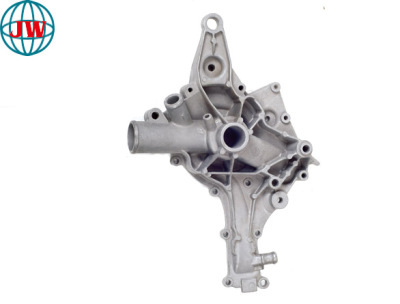
Global Die-Casting Sector Sees Surge in Demand for EV Components, Fueled by Tech Advancements and Regional Expansion
2025-10-22 15:30
Global Die-Casting Sector Sees Surge in Demand for EV Components, Fueled by Tech Advancements and Regional Expansion
The global die-casting industry is experiencing a transformative phase, driven by the accelerating shift to electric vehicles (EVs), breakthroughs in casting technology, and strategic regional investments. As automakers, tech firms, and manufacturers prioritize lightweight, durable, and sustainable components, die-casting—particularly for aluminum and magnesium alloys—has become indispensable. In 2024, the industry’s market value hit $82 billion, and analysts at McKinsey project it will grow to $125 billion by 2030, boasting a CAGR of 7.3%. This growth is not just volume-driven; it’s a shift toward higher-value applications, with three key trends leading the charge: the rise of large-format die-casting for EVs, innovation in smart die-casting systems, and explosive expansion in emerging markets like India and Southeast Asia.
Large-Format Die-Casting Takes Center Stage in EV Manufacturing
The EV revolution has redefined die-casting’s role, with large-format die-castingemerging as a critical technology for streamlining production. Unlike traditional die-casting, which focuses on small to mid-sized parts (e.g., engine brackets), large-format processes create entire vehicle structures—such as EV underbodies, battery housings, and rear frames—in a single piece. This eliminates hundreds of welds, cuts production time by 30–40%, and reduces vehicle weight by 15–20% (a key factor in extending EV range).
Tesla’s “Giga Press” remains the gold standard, but competitors are rapidly catching up. In early 2024, Chinese die-castinggiant Ningbo Haitian Precision unveiled a 12,000-ton large-format die-casting machine—one of the world’s largest—capable of producing EV underbodies for full-size SUVs. The machine uses high-pressure die-casting (HPDC) technology, injecting molten aluminum into a mold at pressures exceeding 1,500 bar to ensure uniform metal flow and minimal defects. Haitian reports that this machine has already secured orders from BYD, SAIC, and Volkswagen, with production set to start in late 2024.
Beyond automakers, battery manufacturers are also leaning into large-format die-casting. South Korea’s LG Energy Solution recently partnered with Japanese die-caster Ryobi to develop aluminum die-cast battery enclosures for its next-gen EV batteries. These enclosures are 25% lighter than steel alternatives and offer better thermal management, reducing the risk of battery overheating. LG estimates that by 2026, 60% of its EV battery packs will use die-cast enclosures, up from 25% in 2023.
Smart Die-Casting Systems: IoT and AI Transform Efficiency and Quality
The die-casting industry is no longer just about heavy machinery—it’s becoming a hub for smart manufacturing. IoT-enabled die-casting systems and AI-powered quality control are revolutionizing how parts are produced, cutting defects, reducing downtime, and optimizing resource use.
Embedded sensors in die-casting molds and machines are now standard, monitoring critical parameters in real time: molten metal temperature (typically 600–700°C for aluminum), injection speed, mold pressure, and cooling time. This data is sent to cloud-based platforms, where AI algorithms analyze it to predict issues before they occur. For example, if a sensor detects a drop in mold temperature (which can cause metal shrinkage and cracks), the AI automatically adjusts heating elements to maintain optimal conditions. German die-casting firm Bühler’s “Smart Cast” system, which integrates IoT and AI, has helped customers reduce defect rates by 45% and unplanned downtime by 30%.
AI also plays a key role in post-production quality checks. Traditional manual inspections only sample 5–10% of parts, but AI vision systems scan 100% of die-cast components—using high-resolution cameras and machine learning to spot flaws as small as 0.1mm (e.g., hairline cracks, surface blemishes). Chinese tech firm 旷视科技 (Megvii) recently launched an AI inspection system tailored for die-casting, which can process 500 parts per hour—three times faster than manual teams. Major die-casters like Guangdong Hongtu have adopted this system for EV battery housings, ensuring compliance with strict safety standards.
Emerging Markets Drive Regional Expansion
While China, Europe, and North America remain the industry’s traditional powerhouses, emerging markets—particularly India and Southeast Asia—are becoming major growth engines. These regions offer low labor costs, proximity to key automotive and electronics hubs, and supportive government policies, making them attractive for die-casting investments.
India leads the charge in South Asia. In 2024, the Indian government launched the “National Die-Casting Mission,” which offers 20% subsidies for die-casters investing in EV component production. This has attracted $1.2 billion in foreign investment, with firms like Japan’s Toyoda Gosei opening a $150 million die-casting plant in Chennai. The plant, which focuses on aluminum EV motor casings, will supply local automakers like Tata Motors and Mahindra, as well as export to Southeast Asia. India’s die-casting market is expected to grow by 9.1% annually through 2030, outpacing the global average.
Southeast Asia is also booming. Vietnam, Thailand, and Malaysia are emerging as “die-casting hubs” for the region, with investments focused on serving both local demand and exports to China and Australia. In Vietnam, South Korea’s Hyundai Mobis opened a $200 million die-casting facility in Ho Chi Minh City in mid-2024, producing aluminum EV suspension parts for Hyundai and Kia. Thailand’s government, meanwhile, offers tax breaks for die-casters using recycled metals (e.g., scrap aluminum), driving adoption of sustainable practices. By 2027, Southeast Asia’s die-casting market is projected to reach $18 billion, up from $10 billion in 2024.
Sustainability: Recyclability and Low-Carbon Practices Gain Traction
Sustainability has become a non-negotiable for the die-casting industry, as manufacturers and customers alike aim to reduce carbon footprints. Die-casting’s inherent recyclability is a key advantage—up to 95% of scrap metal (from trim edges, defective parts, or end-of-life components) can be melted and reused. But recent efforts focus on going further, with two key initiatives leading the way: closed-loop recycling and low-carbon die-casting.
Closed-loop systems keep scrap metal within a single supply chain. For example, BMW’s die-casting plant in Munich collects scrap aluminum from battery housing production, melts it down, and reuses it to make new housings. This cuts carbon emissions by 85% compared to using virgin aluminum, as recycling aluminum requires just 5% of the energy needed to produce new metal. BMW plans to expand this system to all its global die-casting plants by 2026.
Low-carbon die-casting, meanwhile, focuses on reducing emissions during production. Many die-casters are switching to electric machines (replacing gas-powered ones), which cut Scope 2 emissions by 30%. Others are using renewable energy: Sweden’s Haldex, a leading die-caster for commercial EVs, now powers its entire plant with wind and solar, making its die-cast parts “carbon-neutral.” This has attracted orders from Amazon’s electric delivery van division, which aims to use 100% carbon-neutral components by 2030.
Challenges and Opportunities Ahead
Despite its growth, the die-casting industry faces hurdles. The high cost of large-format die-casting machines (which can exceed $5 million) and molds (up to $1.5 million for EV underbody molds) limits access for small and medium-sized enterprises (SMEs). Additionally, a global shortage of skilled die-casting technicians—especially those trained in IoT and AI systems—has slowed production at some plants, with the U.S. Bureau of Labor Statistics reporting a 28% gap in qualified workers.
Yet opportunities outweigh these challenges. The rise of “urban air mobility” (e.g., electric flying taxis) will create demand for lightweight die-cast components (e.g., magnesium alloy frames). The growth of 5G and data centers will drive need for die-cast heat sinks (to cool servers). And government policies—like the U.S. Inflation Reduction Act and EU’s Green Deal—will continue to subsidize sustainable die-casting practices.
As the die-casting industry evolves, it’s clear it’s no longer just a “support sector”—it’s a driver of the global shift to sustainable, efficient manufacturing. For die-casters that embrace large-format technology, smart systems, and regional expansion, the next decade will bring unprecedented growth. For the world, it means lighter EVs, more durable electronics, and a lower-carbon future—all built on the backbone of die-casting innovation.
Get the latest price? We'll respond as soon as possible(within 12 hours)












